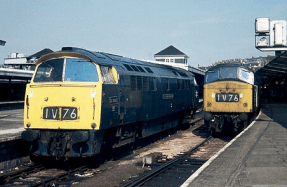HELLIFIELD RURAL BACKWATER TO MAJOR RAILWAY JUNCTION

In his book The Railway in Town and Country 1830–1914, Jack Simmons refers in Chapter 6 to the concept of the ‘railway village’. He cites Didcot, Craven Arms, Bletchley, Tebay and Hellifield as typical examples, the last-named hailed by Simmons “as a new railway town when it became a junction of the Midland’s line to Carlisle with the Lancashire and Yorkshire’s from Blackburn, but it never grew to more than a village”. [my italics]
A mid-nineteenth century description of Hellifield appears in Samuel Lewis’s Topographical Dictionary of England, Vol.2, published in 1848: “Hellifield – a township in the Parish of Long Preston, union of Settle, West Riding of Yorkshire, six miles SSE from Settle; containing 273 inhabitants.” According to Lewis, the township (a large village?) in 1848 comprised 3,381 acres of land, of which 2,968 were classified as meadow and pasture, 254 common land, 24 arable and 78 woodland. It is uncertain if Lewis was aware or unaware of the railway (had it been staked out by surveyors?) at the time of his description.
The Hellifield Parish Council website declares that in the mid-nineteenth century Hellifield was nothing more than a hamlet, with a local workforce mainly concentrated within agriculture and associated trades. There was even a modest cotton weaving industry in the hamlet “and for this purpose several weaving sheds were constructed”.
Hellifield was a rural backwater of Yorkshire and might have remained so had not the railway approached and impinged on the hamlet’s northern periphery in 1848. In this respect, Kenneth Leak writes that “the route of the line was to skirt the village at the foot of Haw Hill, thereby causing little change to the village itself”. (Hellifield – A Journey into the Past) Once established, the railway brought in a workforce of navvies. This must have caused some distress to the local inhabitants, although the author has not found any newspaper reports of navvy disturbances. Leak, op cit, refers to the minimal change in the indigenous population resulting from the coming of the railway: “The population increased only slightly; in fact, by the year 1870, which coincided with the decline in cotton weaving and agriculture, the population actually began to fall. The number of men employed by the railway, had, however, risen to nine.”
The aim of this article is to trace the increasing importance of Hellifield from 1847, when work began on the railway, to the end of the nioneteenth century, the end of an era.
The North
You’re reading a preview, subscribe to read more.
Start your free 30 days



